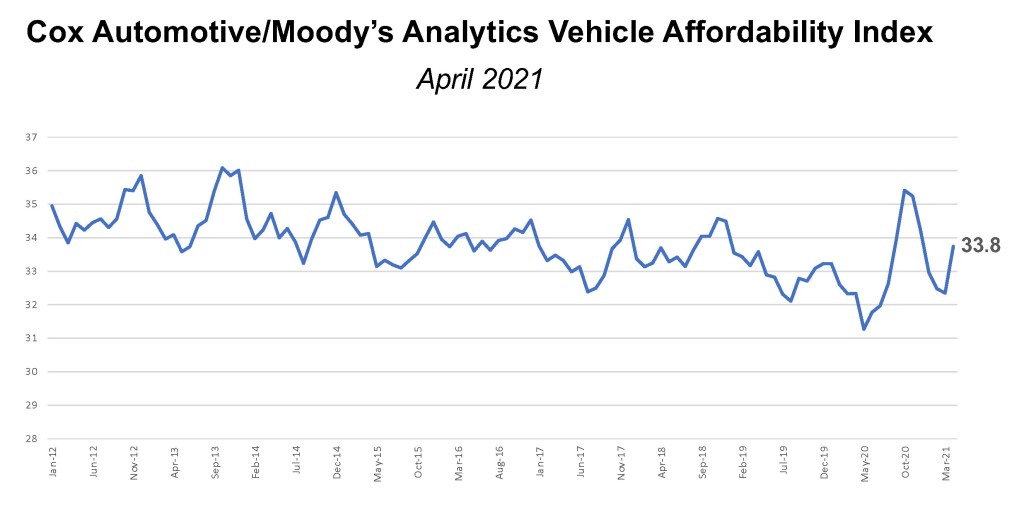Data Point
New-Vehicle Affordability Declines in April
Monday May 17, 2021
Article Highlights
- Breaking a streak of five straight months of improvement, new-vehicle affordability declined in April.
- The number of median weeks of income needed to purchase a new vehicle increased to 33.8 weeks from an upwardly revised 32.4 weeks in March.
- With the decline in affordability in April, affordability remains worse than a year ago.
Breaking a streak of five straight months of improvement, new-vehicle affordability declined in April. The number of median weeks of income needed to purchase a new vehicle increased to 33.8 weeks from an upwardly revised 32.4 weeks in March.
In April, the price paid was modestly higher and the average financing rate also slightly increased, so the monthly payment increased. Median incomes softened from higher levels in February and March, which were boosted by the effect of stimulus payments from two different stimulus packages. Incentives also declined in April. As a result, all components of new vehicle affordability shifted against consumers in April.
With the decline in affordability in April, affordability remains worse than a year ago when prices were lower, incentives were higher and Coronavirus Aid, Relief, and Economic Security (CARES) Act payments boosted incomes. Affordability is also now worse than in February 2020 before the pandemic began.
Click here for the full methodology for the Cox Automotive/Moody’s Analytics Vehicle Affordability Index.
The next update of the Cox Automotive/Moody’s Analytics Vehicle Affordability Index will be published on June 15, 2021.
The Cox Automotive/Moody’s Analytics Vehicle Affordability Index (VAI) is updated monthly using the latest data from government and industry sources, including key pricing data from Kelley Blue Book, a Cox Automotive company. This important industry measure will be released at mid-month to indicate if the prices paid for new vehicles are moving out of consumers’ financial reach or becoming more affordable over time.

